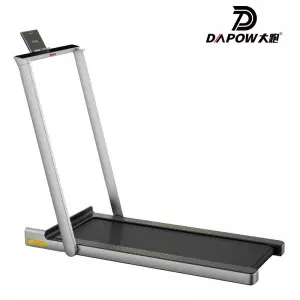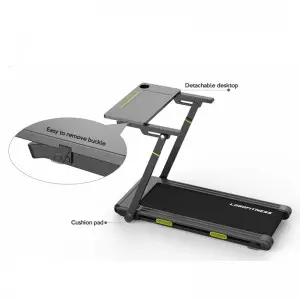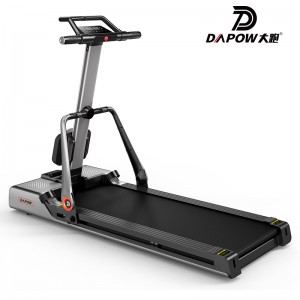As a popular fitness equipment, treadmill can not only help users to carry out effective aerobic exercise, but also reduce sports injuries and improve exercise effects through reasonable warm-up and stretching. For international wholesale buyers, understanding how to scientifically warm up and stretch on the treadmill can not only enhance the added value of the product, but also provide customers with more comprehensive use guidance. This article will introduce the methods, steps and precautions for warming up and stretching on the treadmill in detail to help you better understand and promote this function.
First, the importance of warming up
1. Raise your body temperature
Warming up increases the body’s temperature, making muscles and joints more flexible and reducing the risk of injury during exercise. With a simple warm-up exercise, you can increase blood circulation and prepare for your upcoming high-intensity exercise.
2. Reduce sports injuries
A proper warm-up activates the muscles, improves the range of motion of the joints, and reduces the likelihood of muscle strains and joint sprains. This is especially important for users who use treadmills for long periods of time, as running itself is a high-intensity exercise.
3. Improve athletic performance
Warming up helps your body get into top shape and improves performance. By activating the body’s nervous system and muscle system, users can better control their movements during running and improve exercise efficiency.
Second, the warm-up method on the treadmill
1. Walk easily
The first step to warming up on the treadmill is a light walk. Set the treadmill speed at a low level (e.g. 3-4 km/h) for a 5-10 minute walk. This can help the body gradually adjust to the rhythm of the exercise, raising the heart rate while reducing the impact on the joints.
2. Dynamic stretching
Dynamic stretching is a warm-up method that increases flexibility by moving the joints and muscles. When performing dynamic stretching on the treadmill, you can include the following:
Leg swing: Stand on the side of the treadmill and gently swing your legs, gradually increasing the swing range and moving your hip joints.
High leg lift: Set the treadmill speed to a slow speed and perform high leg lift exercises to activate leg muscles.
Arm swing: the arms naturally droop, gently swing the arms, move the shoulder joint.
3. Slight jumps
Light jumping is another effective way to warm up. When performing light jumps on the treadmill, you can take the following steps:
Step jumps: Set the treadmill to a slow speed and perform small jumps that engage the ankle and calf muscles.
Alternate leg lifts: Perform alternate leg lifts on the treadmill to improve leg strength and flexibility.
Three, the importance of stretching
1. Reduce muscle fatigue
Stretching can effectively reduce muscle fatigue and help the body recover. By stretching, you can promote blood circulation, speed up the discharge of metabolic waste, and reduce muscle soreness.
2. Improve flexibility
Stretching on a regular basis can improve your body’s flexibility and increase the range of motion of your joints. This is especially important for treadmill users because running itself is a demanding exercise for joints and muscles.
3. Promote recovery
Stretching helps the body recover from exercise faster. By stretching, you can relax tense muscles, reduce fatigue after exercise, and improve the body’s recovery speed.
Fourth, the stretching method on the treadmill
1. Static stretching
Static stretching is a method of increasing muscle flexibility by holding the stretching position for a period of time. When doing static stretching on the treadmill, you can include the following:
Leg stretch: Set the treadmill to a slow speed and stretch your legs. You can use the standing or sitting position to stretch your leg muscles.
Waist stretch: Hold the arm of the treadmill with your hands and bend your body to one side to stretch your waist muscles.
Shoulder stretch: Set the treadmill to a slow speed and perform shoulder stretches. You can stretch the shoulder muscles by crossing your hands.
2. Dynamic stretching
Dynamic stretching is a stretching method that increases flexibility by moving the joints and muscles. When performing dynamic stretching on the treadmill, you can include the following:
Leg swing: Stand on the side of the treadmill and gently swing your legs, gradually increasing the swing range and moving your hip joints.
High leg lift: Set the treadmill speed to a slow speed and perform high leg lift exercises to activate leg muscles.
Arm swing: the arms naturally droop, gently swing the arms, move the shoulder joint.
3. Squat stretches
Squat stretching is an effective whole body stretching method. When doing a squat stretch on the treadmill, you can take the following steps:
Standing squats: Stand on a treadmill with your feet shoulder-width apart and perform squats to stretch your leg and lower back muscles.
Squat against the wall: Set the treadmill speed to a slower speed and squat against the wall to increase the stretching effect.
Five, warm up and stretching precautions
1. Warm-up time
The warm-up time should be adjusted according to the individual situation and exercise intensity. In general, the warm-up time should be between 5-10 minutes. For high-intensity exercise, the warm-up time can be extended appropriately.
2. Stretch time
Stretching time should also be adjusted according to individual circumstances and exercise intensity. In general, the stretching time should be between 10-15 minutes. For long periods of exercise, the stretching time can be extended appropriately.
3. Movement norms
Whether it’s warming up or stretching, routine is very important. Irregular movements not only fail to achieve the desired effect, but also may increase the risk of injury. Therefore, when warming up and stretching, you should ensure that the movement is standardized and avoid excessive force or sudden movements.
4. Personalize
Everyone’s physique and exercise habits are different, so warm-up and stretching methods should also be adjusted according to individual circumstances. For beginners, the intensity and time of warm-up and stretching can be appropriately reduced; For experienced runners, the intensity and time of warm-up and stretching can be appropriately increased.
Vi. Summary
Scientific warm-up and stretching on the treadmill can not only reduce sports injuries and improve the effect of exercise, but also help the body recover faster. Through a reasonable warm-up and stretching method, users can get a better fitness experience on the treadmill. For international wholesale buyers, understanding these methods can not only enhance the added value of products, but also provide customers with more comprehensive guidance on use.
This is a comprehensive guide to warming up and stretching on the treadmill. Hopefully, this article will help you better understand the latest trends and directions in this field. If you have any further questions or need more detailed information, please feel free to contact us.
Post time: Mar-26-2025




